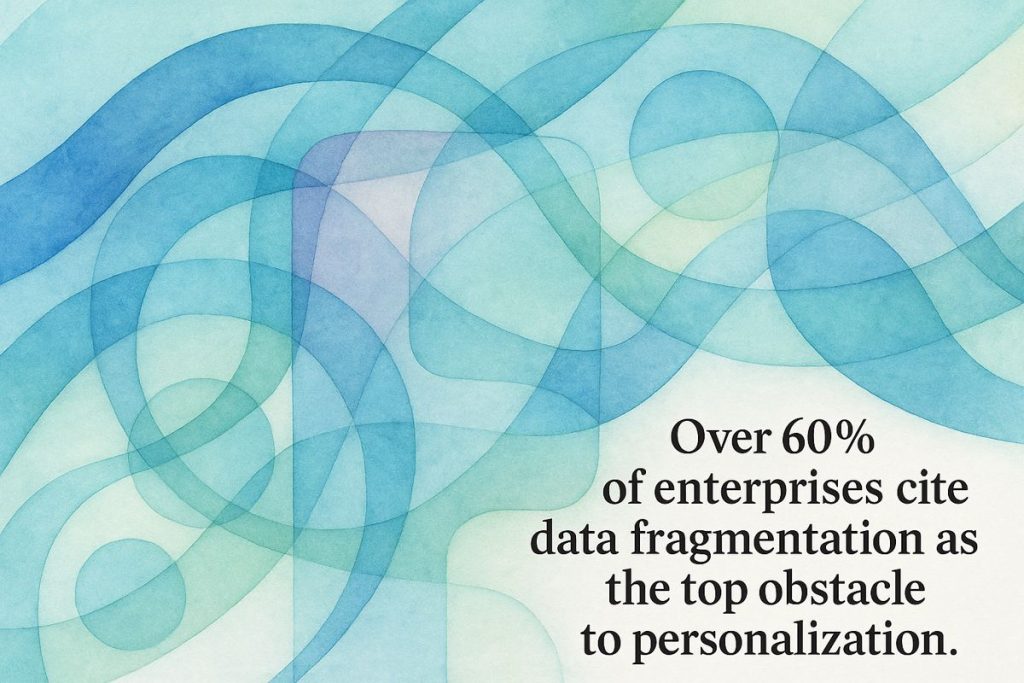Hightouch’s AI Identity Resolution is a powerful tool that brings together messy, scattered customer data into one clear profile, all within your own data warehouse. Using both exact and smart guessing methods, it handles and matches information quickly and securely, helping businesses see and reach their customers better. With easy controls and a friendly interface, even non-technical teams can use it to send more personal messages. Big companies like Spotify and PetSmart trust it to keep their customer records sharp and reliable.
What is Hightouch’s AI Identity Resolution and how does it unify fragmented customer data?
Hightouch’s AI Identity Resolution is a warehouse-native solution that uses both deterministic and probabilistic matching to unify fragmented customer data into a single, accurate profile. It operates securely within your data warehouse, offering transparency, configurability, and real-time activation across sales and marketing platforms.
The Splintered Customer: Why Identity Matters More Than Ever
In 2025, the digital bazaar is louder than a Moscow rush hour. Every click, scroll, and sigh leaves a breadcrumb across platforms, turning each customer’s story into a palimpsest—layers upon layers of data graffiti. The trouble? Most organizations still chase the illusory golden record, their customer profiles as fragmented as a broken mirror. I remember, not long ago, staring at three conflicting records for the same pharma rep in Salesforce, each insistent with a different email. It was like playing whack-a-mole with a database.
Hightouch’s answer is an AI-driven identity resolution engine that doesn’t just tape the mirror back together—it re-forges it, in the warehouse, with a whiff of fresh-brewed SQL. You can almost hear the hum of Snowflake’s servers as records are unified, the data warehouse becoming less a digital attic and more a hyperspectral lens onto the customer’s journey. The stakes? Higher than ever. According to recent CDP stats, 60% of enterprises blame data fragmentation for their personalization woes. Is it any wonder marketing feels like handwriting letters without knowing the address?
The Alchemy of Matching: Deterministic, Probabilistic, and Everything Between
Let’s be clear: Hightouch doesn’t operate as some enigmatic black box. Its architecture is warehouse-native—meaning your data never performs a vanishing act to some third-party vault. Instead, it lives and breathes inside your existing warehouse, whether that’s Snowflake or another modern titan. Security teams can exhale. Ownership? Still yours. I once tried migrating a pharma client’s data set to an external CDP; the compliance paperwork alone was enough to make me reconsider my career choices. Live and learn.
Matching is where the real magic, or perhaps alchemy, happens. Hightouch gives you both deterministic (the Sherlock Holmes of matching—precise, infallible when the clues are clear) and probabilistic (the Columbo—subtle, connecting threads others miss) methods. Need high-confidence matches for regulated workflows? Deterministic is your trusty scalpel. Want broader connections for omnichannel campaigns? Probabilistic stretches its algorithmic feelers. You can tweak, inspect, and rewrite the playbook on what counts as a ‘match’—no arcane algorithms kept under lock and key. That configurability is worth its weight in gold, especially for industries like pharma, where auditability is as crucial as efficacy.
Golden Records, Survivorship, and a Dash of Humanity
Every unified customer profile—the so-called golden record—relies on survivorship logic. Hightouch lets you decide: keep the freshest data, the most complete, or the most trusted source. This is not a one-size-fits-all operation; it’s more like fine-tuning a Stradivarius. When profiles finally emerge from this process, they can be activated in real time across Salesforce, Salesforce Marketing Cloud, or whatever flavor of engagement platform you fancy. Imagine the texture of a personalized email campaign, where details don’t just match but resonate, every data point as crisp as new snow.
I’ll admit, early on, I doubted whether this level of transparency and control would appeal to non-technical users. Turns out, with Hightouch’s visual interface (plus SQL and dbt hooks for the code-curious), even the business side gets to play. My skepticism? Chalk it up to a few too many opaque tools in the past—those ones that promise the moon and deliver, well, moonlight.
Real-World Scale and the Road Ahead
Spotify, Grammarly, Autotrader, PetSmart—the roster of Hightouch adopters reads like a who’s-who of data-hungry enterprises. Life sciences and pharma teams, in particular, find the platform indispensable for maintaining pristine, compliant records. Sales, marketing, and support teams no longer shout into the void. Instead, they wield unified profiles with surgical precision, orchestrating omnichannel strategies that would make even a maestro envious.
Still, the future isn’t all smooth jazz. As the volume and velocity of customer data surge, tools like Hightouch must keep pace—adapt or risk irrelevance. Sometimes I wonder if next year’s AI will make today’s tech feel like dial-up. But for now, the industry zeitgeist favors warehouse-native, transparent identity resolution. If you want to dive deeper, their official blog is a treasure trove, and MarTech360’s coverage throws in some spicy context.
So, is this the end of fragmented customer data? Not quite. But with Hightouch’s AI-driven, warehouse-native approach, it’s starting to smell like a new beginning.
Aha.
